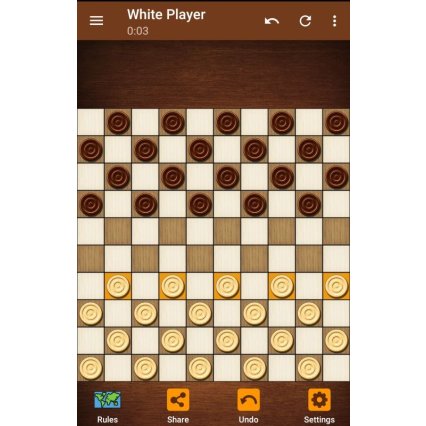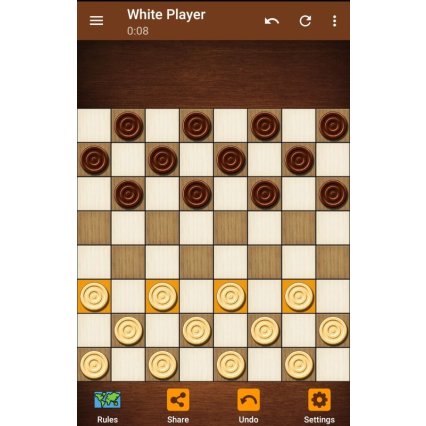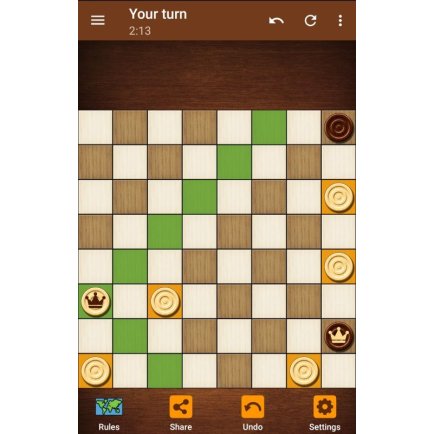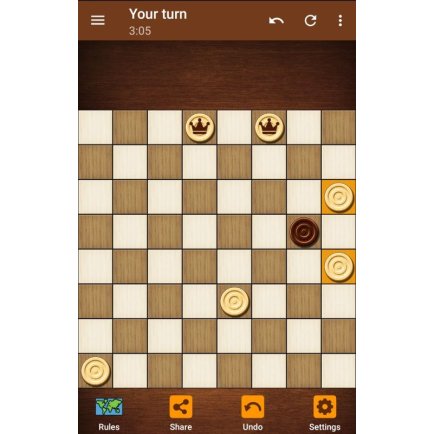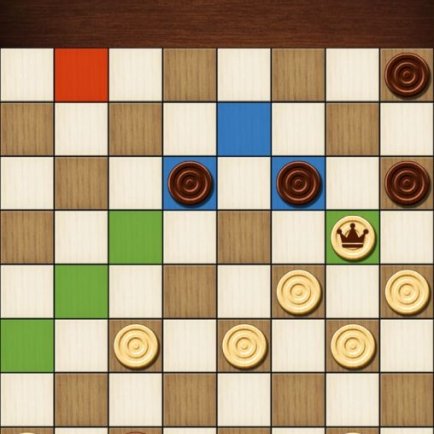Basic Draughts Rules
In the era of graphically advanced computer games with different characters and complex plots, board games remain popular. Isn't it surprising that games like draughts are still a bestseller? People not only buy traditional board games but also search websites where they could play against a virtual opponent and download apps on their phones.
If you think about it thouroughly - this is not a coincidence. Draughts is the game that develops logical thinking and has clear rules. Many of us have very positive associations with childhood when playing draughts or checkers we spent time with our family and friends - parents, grandparents or siblings.
Draughts seem like a simple game, but winning with an experienced player is not easy at all. You can think over strategies here and create really interesting situations on the board. Even if you often play, the game will surprise you.
Draughts have many national variants, so you can also change the rules according to which you play. Are you going to decide on mandatory capture? Do you want the king to move any distance diagonally i.e. the king has "long moves" or do you prefer it to move only one step forwards or backwards? Depending on the rules, pieces are also able or not able to capture backwards. Changing the rules is a good way to vary the game, which will be a great exercise for your brain.
The draughts lovers distinguish two basic types of the game:
- international draughts → played on a 10x10 board (100 fields);
- classic draughts → played on an 8x8 board, i.e on 64 fields.
Board and pieces
What all variants of draughts have in common is the board - similar to the chessboard. Also at the beginning of the game, each player has the same number of pieces.
In most variants, players place their pieces and play the game using black fields, although there are exceptions to this rule. This also results in the configuration of the board - usually the first field on the left side of each player is a dark one.
Different rules of draughts
However, everyone who begins their adventure with draughts should remember that the rules followed by people in different countries are not the same. A Spaniard likes to play according to his rules, but most likely a Brazilian or an American will choose different ones. If, in addition to the general rules, you are also looking for more detailed information about game variants, you've reached the right place Check Variety of draughts - did you know that draughts game rules may differ?
Who starts the game? White pieces but...
The first move belongs to the player using white pieces. Players take turns every single move and the player is permitted to move only his own pieces. In general, pieces can be moved diagonally, forward and be placed on the empty field in the next row. Still, there are exceptions to this rule, e.g. Turkish draughts.
Moves backwards
Less experienced players often wonder if a piece can move back. The rules clearly emphasize that moving back is not allowed. The exception is a king/queen - the extraordinary piece that can move backwards.
How can a regular piece become a king (queen)?
King (also named a queen) is a special piece, which can move differently to all the other pieces - and anyone who has ever tried to play draughts, knows how important it is to get a king, as well as how the king can help to win quickly. But none of the pieces has these exceptional privileges at the beginning of the game. It takes a lot of effort to make a piece to become a king - your piece needs to walk through the entire board, reach the promotion line (the most distant row on the opponent's side) and stop on it.
What are the king's movements?
Unlike other pieces, a king can move forwards as well as backwards. In most variants of draughts, the king moves diagonally, provided that your own pieces are not blocking the king's movements and at the same time that the king will not be blocked by your opponent's pieces (placed one behind another). King is allowed to end diagonal movement on any, even the most distant field. The exception to this rule is English draughts and American checkers - a king can only move one field forwards or backwards.
Each player strives to win by capturing all the opponent's pieces. The more kings you have, the easier it is for the player to win. However, you should try not to let the opponent do the same.
And not only capturing of all opponent's pieces can give you a victory - if you can block his pieces in such a way that he won't make any move, you've got your work done :) You won!
Capture rules
It is usually considered that all pieces can capture forwards and backwards. Capturing means that your piece jumps over the opponent's piece and stops on an empty field just behind it.
You can also capture more than one piece in one move (named as multiple capturing) or even change the direction of the capture, provided that there is one empty space between the opponent's pieces (so that your piece can freely jump on the field between them).
Mandatory capture
Players have often doubts whether the capture in draughts is obligatory. Amateurs, as well as professionals, agree that capturing in draughts is mandatory.
Which capture should be chosen?
Following international rules, the player should choose a sequence of capturing so that he captures the maximum number of pieces - which means as follows :
- if we start capturing, then we should finish it - you can not stop in the middle of the sequence of multiple capturing;
- if we have at least two captures to choose from, then we have to decide on this one during which more pieces will be captured;
- if there are more opportunities to capture the same number of pieces, then it is up to you to decide on the most beneficial sequence.
In American checkers or English draughts you can choose any sequence of capturing, you have no obligation to capture the maximum number of pieces.
Winning after a long fight with a demanding opponent gives a lot of satisfaction. But it also requires a lot of concentration, the ability to predict a few moves in advance, planning, and often sacrificing one or even more pieces.
The most important thing is to capture the opponent's pieces
More experienced players know that confrontation cannot be avoided - pieces must meet on the board, and the first "meeting" usually happens quickly in the middle of the board. To some extent, the player's success depends on the ability to place the pieces in such positions so as to capture as many pieces of the opponent as possible. And surprisingly, losing or not any of your own pieces is not the most significant issue- in the end remember that a fight requires victims. It is essential to confront your opponent in such a manner that leads to capturing his pieces.
How to place the pieces on the board?
Draughts beginners are often under the illusion that setting the pieces on the left or right side of the board is safer. And unfortunately, they are not right in this case. If a piece is placed at the edge of the board, it controls only one square in front of it. At the same time, a piece in the centre of the board can effectively control two fields. If you care about protecting your pieces, place them in the middle of the board - build a team of pieces, they will be protecting one another (from the back, the left and right side). Remember also that the pieces placed at the edges of the board are easier to be blocked and thus it is less complicated to exclude them from the game. A lone, blocked piece somewhere on the side of the board will not be useful and will not help you to win.
It's not worth splitting pieces into small groups - when they form one team, they cooperate better together. It is easier for them to protect one another. It's also easier to pull your opponent into a trap.
In the case of checkers it is not exceptional that a game can end in a draw.
In 2007, Jonathan Schaeffer in the latest version of his computer programme proved that in English draughts the game during which players do not make any mistake, is always to end in a draw.
In real life people are used to making mistakes, therefore every single game is exciting and unpredictable. Still, there may happen that playing draughts ends in a draw:
- if during the next 25 moves (a 10x10 board) or during the next 20 moves (a 64-field board) only the kings are moved, and none of the players either move the regular pieces or makes the capturing movement;
- if the same sequence of pieces on the board appears for the third time.
Do you want to check your skills?
Play draught Entirely for free



